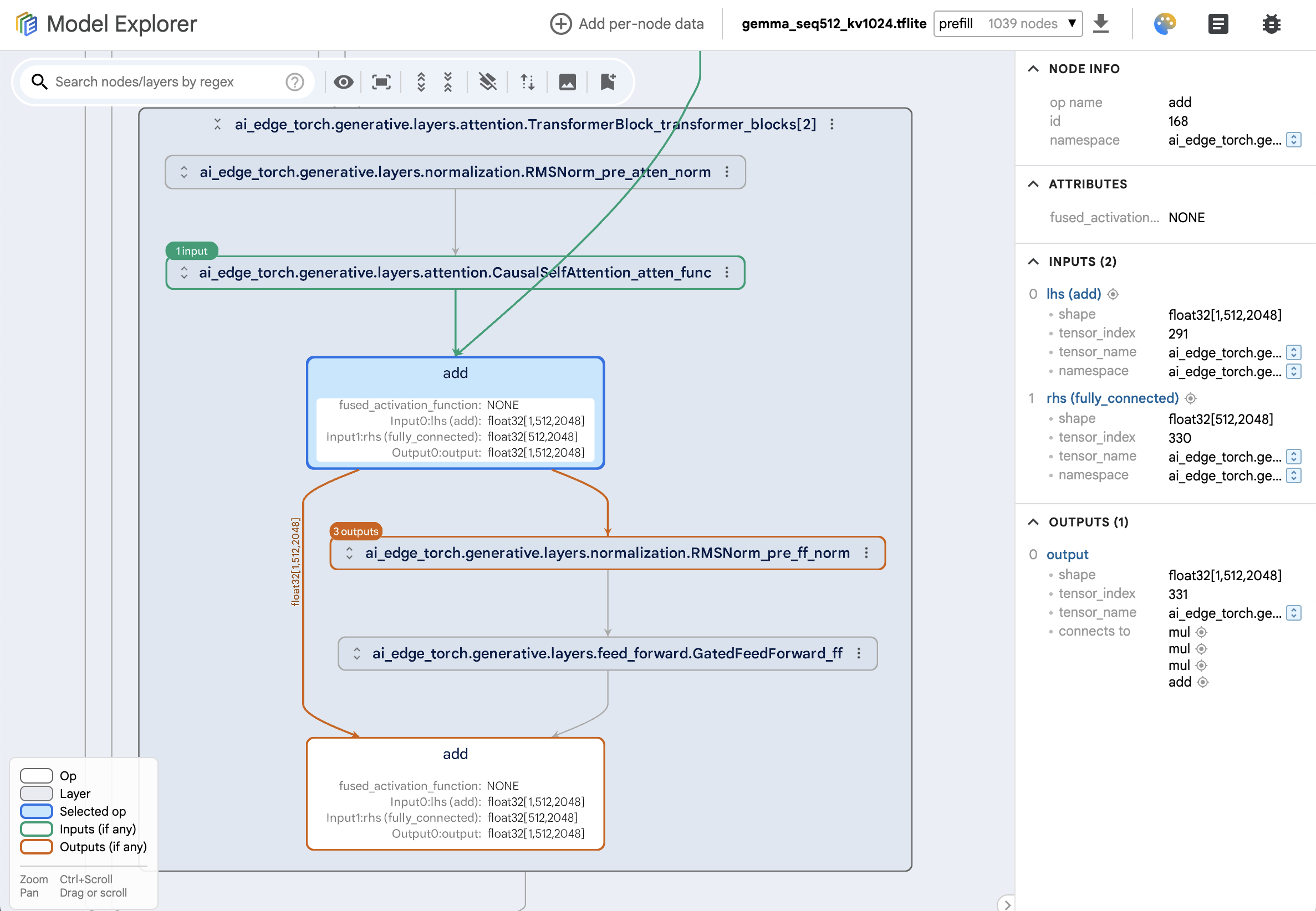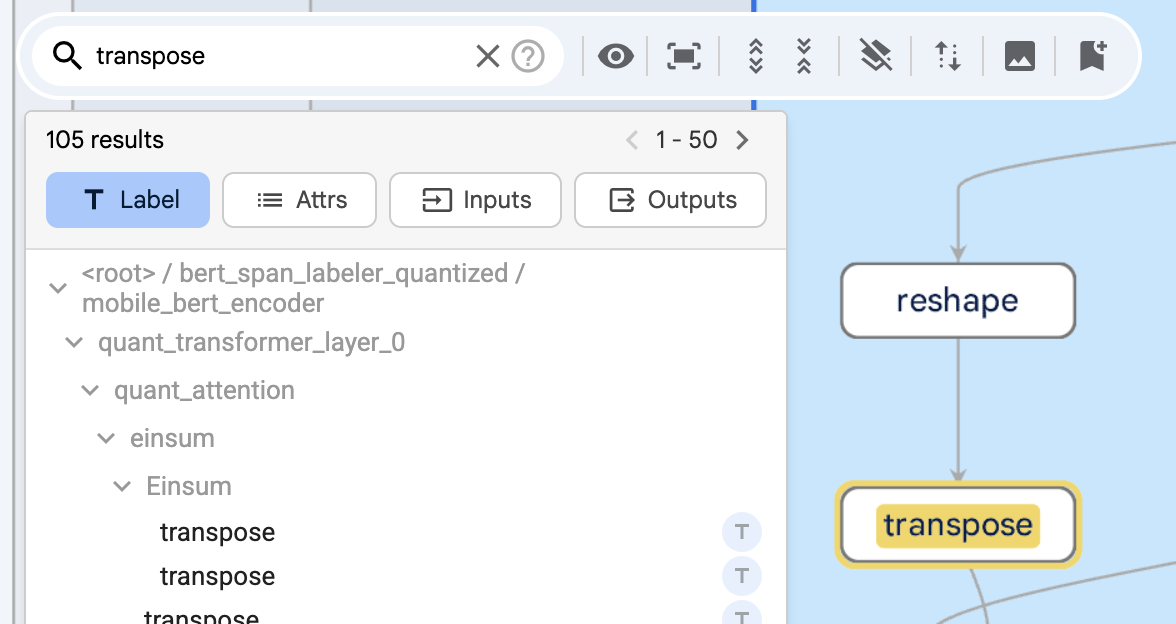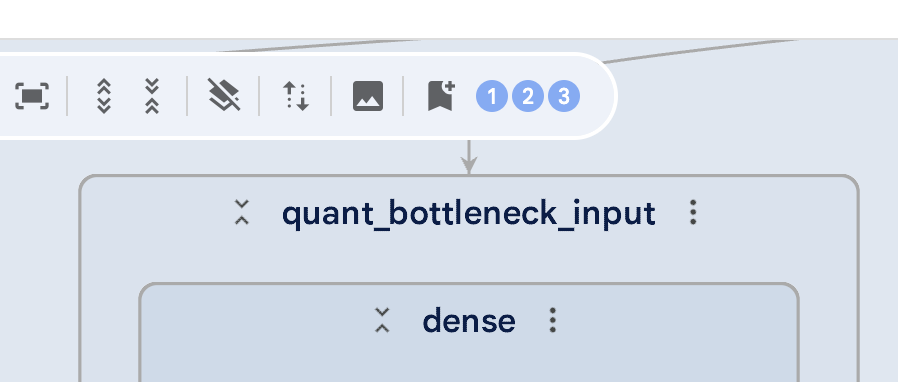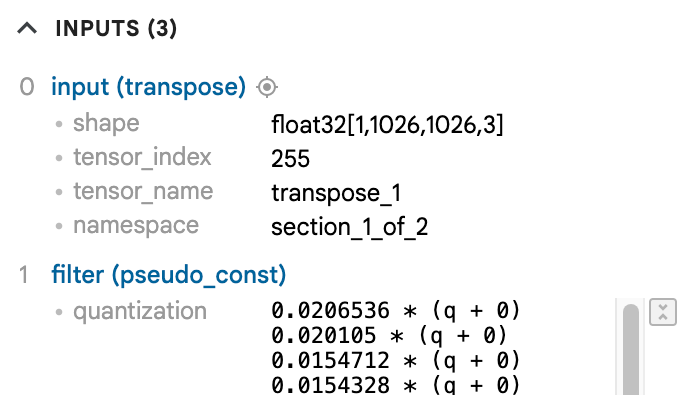ML モデルとグラフを分析し、デバイス上のターゲットへのデプロイを高速化できる可視化ツール。

エッジ開発の高速化
エッジデバイスの制約により、モデルを効率的に実行する前に、モデルを変換して最適化するための追加の手順が必要になることがあります。可視化は、モデルを理解し、最適化の対象を特定するための最も効果的な方法の一つです。
| コンバージョン数 | 量子化 | 最適化 |
|---|---|---|
| モデル エクスプローラの並べ替え比較機能を使用すると、コンバージョンに関連する問題を簡単に見つけることができます。グラフをレイヤごとに移動し、セクションを開いたり閉じたりすることで、グラフを詳しく確認します。必要な粒度でグラフ内の内部構造と接続を検査します。 | Model Explorer を使用して、量子化の影響を受ける問題のあるオペレーションを特定します。オペレーションをエラー指標で並べ替えて品質の低下を見つけ、レイヤごとの分析情報を取得し、さまざまな量子化結果を比較して、理想的なモデルサイズと品質のトレードオフを見つけます。 | Model Explorer を使用すると、ベンチマークとデバッグ ツールの出力をより詳しく把握できます。GPU で実行できるオペレーションに関する分析情報を取得し、オペレーションをレイテンシで並べ替え、アクセラレータ間でオペレーションごとのパフォーマンスを比較します。 |
大規模なモデルのサポート
Model Explorer は、大規模なモデルをシームレスにレンダリングするように設計されています。数千のノード?、GPU ベースのレンダリング エンジンは、非常に大きなモデルでもスムーズにレンダリングできるようにスケールアップできます。また、Model Explorer の独自のアプローチにより、ファイルとフォルダのシステムのようにレイヤを閉じることができるため、より迅速で簡単な操作が可能になります。
作業を効率化するための機能
| Search | 分割ビュー | データ オーバーレイ |
|---|---|---|
| 強力な正規表現ベースの検索により、特定のノードの検索、フィルタ、ハイライト表示が可能です。
|
同じタブにモデルを並べて読み込み、簡単に比較できます。
|
ノード固有のカスタムデータを Model Explorer に読み込んで、モデルのホットスポットなどの問題をすばやく特定します。
|
| .png にエクスポートする | ブックマーク | メタデータに簡単にアクセスできる |
| ボタンをクリックするだけで、グラフの画像をエクスポートしてチームと共有できます。
|
ブックマークを追加してグラフに位置情報を保存すると、エリア間を簡単に移動できます。
|
テンソルの形状の表示、入力と出力のトレース、同一レイヤのハイライト表示、子ノードの数を確認できます。
|
モデル エクスプローラを使用する 2 つの方法
| ローカルで実行する | Colab ノートブックで実行する |
|---|---|
| GitHub の簡単なインストール手順に沿って、ローカルマシンに Model Explorer を設定します。ブラウザ ウィンドウで実行され、データはすべてローカルに保存されます。Linux、Mac、Windows をサポートしています。 | Model Explorer は Colab で適切に動作するため、既存のモデル開発ワークフローに統合できます。デモノートブックをお試しいただくか、インストール手順に沿って独自のノートブックに追加してください。 |







